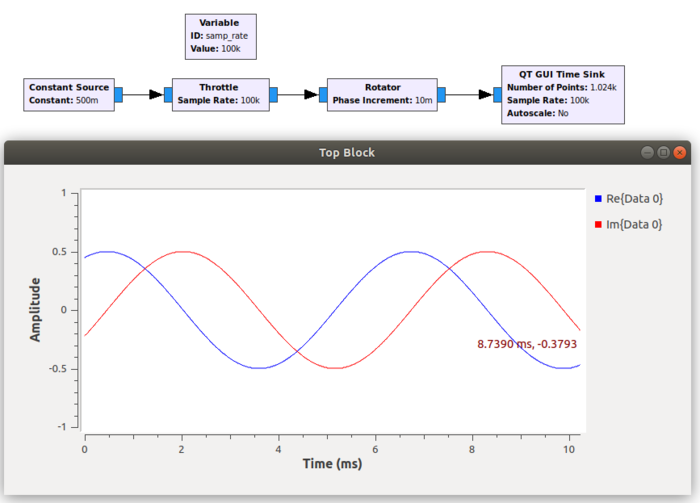Rotator: Difference between revisions
Jump to navigation
Jump to search
(Created page with "Makes a complex rotator block. The phase increment (in radians) is how much phase will be added to the input every value. In the example below the phase increment is set t...") |
No edit summary |
||
| Line 1: | Line 1: | ||
Makes a complex rotator block. The phase increment (in radians) is how much phase will be added to the input every value. | Makes a complex rotator block. The phase increment (in radians) is how much phase will be added to the input every value. | ||
In the example below the phase increment is set to 0.01 radians and the sample rate is 100kHz, so that equates to 1000 radians every second, or 1000/(2pi) = 159 cycles per second. | In the example below the phase increment is set to 0.01 radians and the sample rate is 100kHz, so that equates to 1000 radians every second, or 1000/(2pi) = 159 cycles per second. This corresponds to a period of about 6ms, as shown in the time sink. | ||
Example Flowgraph. | Example Flowgraph. | ||
[[File:Rotator-ex.png|700px]] | [[File:Rotator-ex.png|700px]] | ||
Revision as of 03:34, 29 December 2018
Makes a complex rotator block. The phase increment (in radians) is how much phase will be added to the input every value.
In the example below the phase increment is set to 0.01 radians and the sample rate is 100kHz, so that equates to 1000 radians every second, or 1000/(2pi) = 159 cycles per second. This corresponds to a period of about 6ms, as shown in the time sink.
Example Flowgraph.
